Photos (clockwise from top left) CNN, ABC News, Daily Mail, Crikey
It looks like Australia’s carnival barker-in-chief is about to be exposed in full view of the world, his climate change chicanery (and standard, across-the-board mendacity) subjected to the withering gaze of the global media. It’s been a long time coming.
The UN Climate Change Conference (COP26) gets underway on Sunday night in Glasgow, Scotland, but that hasn’t stopped the world’s press from piling on ahead of time following Prime Minister Scott Morrison’s Tuesday release of a glossy brochure, “The Plan to Deliver Net Zero The Australian Way”.
Note the upper case ‘P’ in ‘Plan’ (always a must when you’re from marketing) and the italicised Australian Way in the title, a tip of the hat to Morrison’s “quiet Australians” which gives the PM a nationalistic rallying cry should the sales pitch stumble (more on that later).
And stumble the ‘Plan’ did, right out of the gate. CNN led the charge, accusing Morrison of “begrudgingly rolling out the weakest climate pledge of the world’s richest countries”.
“Australia’s climate policy is being dictated by a former accountant in a cowboy hat,” wrote CNN’s Ben Westcott, mocking Nationals leader Barnaby Joyce.
Meanwhile, the New York Times said Australia’s “last-minute commitment” was “built on hope for new technology, and little else”. The Inquirer described Australia as “long under fire as one of world’s top producers of coal and gas” while the Financial Times accused us of being “wedded to fossil fuels”.
Summarising the mood, News Corp’s Matt Young wrote of a “barrage of criticism in global headlines”. Referencing a spat between Morrison and naturalist Sir David Attenborough, Young quoted the legendary documentary maker and net zero champion during a BBC interview: “there are still people in Australia who say ‘no, no, no, no, of course it’s very unfortunate that there were (the fires of 2019) but it’s a one-off’.
“But every month that passes, it becomes more and more incontrovertible, the changes to the planet that we are responsible for … are having these devastating effects.”
The narrative from the world’s media seems clear: Australia is to be at least one of the designated pariahs of COP26, with Morrison set for the kind of grilling he’s rarely, if ever, had from our normally pliant press. Buckle up, Prime Minister.
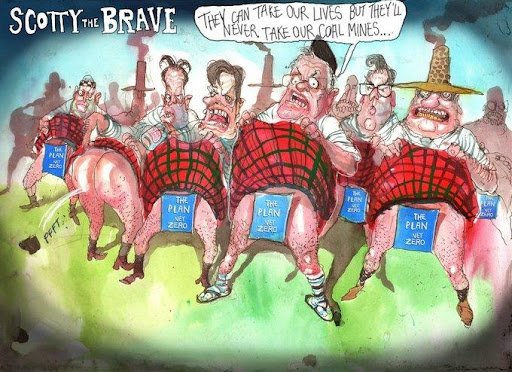
Cartoon: David Rowe, Financial Review
Political and social commentator Ronni Salt describes Morrison and his minders as grand masters at spinning the grand narrative. And the beauty of a grand narrative, especially if you’re not so hot on the minutiae like our PM, is that it “doesn’t rely on detail”.
“Morrison’s team play with … imagery, the grand narrative. The idea that you don’t focus on the details too much, you just remember how it makes you feel,” she wrote in The Shot. “A grand narrative in the Team Morrison sense is a device they use to convince you that Scott Morrison is everything other than what he really is.
“How they do that is by casting a vast, barely tangible, net up into the sky, a grand narrative net, one that says: ‘Scott Morrison is strong. Scott Morrison is a hero. Scott Morrison will save you.’ The way they keep that imagery afloat is by pumping it full of air and reinforcing it all the time, constantly, every day of every week of every month in every way. Scott is strong. Scott is our hero.”
If anything adheres to the primacy of image over detail, it’s Morrison’s ‘Plan’.
For a document outlining our future in a critical area, details within the 15-page ‘Plan’ summary document are shamefully scarce. There’s mention of Morrison’s stated goal of net zero emissions by 2050, more than $20 billion for low emissions technologies, including carbon capture and storage, and new projections which, if reached, could see Australia reduce emissions by 30 to 35 per cent by 2030.
“It is a uniquely Australian ‘Plan’ … it is an energy, trade and economic ‘Plan’, not just an environmental one … it is about delivering real results through technology, not taxes (and) is focused on Australia’s national interest. It keeps our traditional advantages in the regions while supporting the growth of new industries (and) guarantees we keep downward pressure on energy prices and locks in reliable power,” the summary document states.
“It is not a ‘Plan’ at any cost … it will not shut down coal or gas production or exports (and) it will not cost jobs – not in farming, mining or gas. It is not set and forget and has an ‘insurance policy’ review mechanism to make sure it keeps delivering for regional Australia.”
Lots of carefully-crafted word imagery there, but not much else. No mention, for example, of what carbon-belching goodies the Nationals wangled to secure their surly compliance with the Morrison grand narrative: “I don’t have to tell you,” Joyce said at a pre-’Plan’ presser, although $3 billion in subsidies for coal exports via new rail infrastructure (Gladstone, Queensland) have already been announced.
Morrison insists we can get to net zero by 2050 but, for some strange reason, he won’t show us the modelling it’s based on. The International Energy Agency (IEA) wants an end to coal power by 2030, a target Australia has no hope of achieving with current strategies, yet there’s no mention of the frankly fanciful goal of our being weaned off coal in that time.
“Technology, not taxes” is a catchy phrase, but the New York Times scoffed at the $20 billion investment as based on “hope for (future) technology, and little else”. In May, the IEA – perhaps not surprisingly – ruled out yet-to-be-invented low emissions and carbon capture technology as legitimate components of any national net zero plan.
PLEASE HELP US CONTINUE TO THRIVE BY BECOMING AN OFFICIAL FOOTYOLOGY PATRON. JUST CLICK THIS LINK.
Even the most carefully-crafted word imagery has some tells if you look closely enough. Thus, the abovementioned “review mechanism to make sure (the ‘Plan’) keeps delivering for regional Australia” is, in fact, wriggle room for the Nationals on net zero: a permanent review process of the emissions reduction target which could see the government pull away from the ‘Plan’, according to Ben O’Shea of the West Australian.
“I think it’s going to be very interesting to see how (the ‘Plan’) ages,” O’Shea told Sky News. Indeed it will.
Sky News host Paul Murray says the “battle” at the next election will be over how Australia gets to net zero emissions by 2050. Careful what you wish for, Paul: that scenario involves Morrison, the grand narrator, going into details he’s neither good at nor happy to share with us punters.
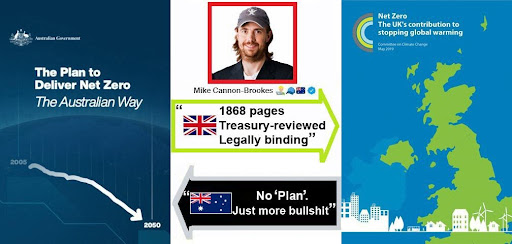
Compare the pair: Australia’s vague, non-binding ‘Plan’ (left) is embarrassingly thin next to mandatory UK goals (right) as Atlassian co-founder Mike Cannon-Brookes noted.
It seems foreign media are more interested than many of our own on such pesky issues as the promotion to our Cabinet of climate-delaying resources minister Keith Pitt, a move made to placate National Party net zero sceptics (covered by CNN) or the lack of binding legislation ensuring compliance to bring about net zero (Reuters). The latter is of particular concern, given Morrison’s propensity to lie and break his promises.
The Monthly was one Australian outlet doing its bit to keep the bastards honest. Without providing modelling, the ‘Plan’ somehow “projects that Australia will ‘meet and beat’ its dangerously lacklustre 2030 emissions target by achieving emissions cuts of up to 35 per cent, while still refusing to sign up to a more ambitious 2030 target,” Rachel Withers wrote (emphasis added).
“The ‘Plan’ is based on existing policies,” Laura Tingle of the ABC pointed out – an alarming bit of news in light of a recent analysis from Climate Action Tracker, showing Australia’s existing climate policies are “highly insufficient” to reach stated goals and lead to further, retrograde investment in new fossil fuel projects.
“We’ve spent a year waiting for this 2050 climate ‘Plan’ and it’s actually just the status quo with some new speculative graphs,” wrote Katharine Murphy of The Guardian. “To change course radically, the Coalition would have to admit that for a decade it traded the national interest for a handful of regional Queensland seats.”
Again, perhaps the biggest tell are those italicised words on the ‘Plan’s’ cover: The Australian Way. Thus, we have “not just an environmental ‘Plan’” but an energy, trade and economic one – “a uniquely Australian ‘Plan’,” as the government puts it.
Likewise, we have a vague net zero goal, based on “existing policies” (The Australian Way) that won’t get us there and promises of “real results” through yet-to-be-invented technology (!) while staying focused on the often-contrary national interests of, you got it, Australia.
Perhaps Atlassian co-founder and clean energy proponent Mike Cannon-Brookes summed the ‘Plan’ up most succinctly (above): “No ‘Plan’. Just more bullshit.”
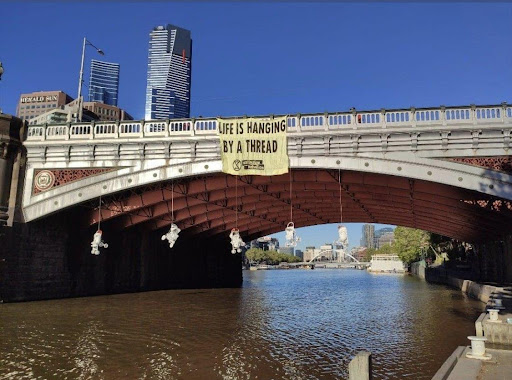
Photo: Channel 7
COP26 gets underway Sunday night in Glasgow, Scotland. Those susceptible to that uniquely Australian reflex sometimes known as ‘cultural cringe’ might want to tune out, as with every article in a major foreign publication, every public-spirited stunt from Extinction Rebellion (above) or Dan Ilic, the higher the likelihood that Australia and Scott Morrison will be the embarrassing focal point of global indignation on the environment.
Other world leaders – themselves no environmental angels – aren’t above the kind of deflections and distractions Morrison has proved a master of. They’ll be more than happy our PM reluctantly hopped on his RAAF 737 jet, bound for Glasgow with a big target on his back.
As with pretty well everything Morrison does as PM, the ‘Plan’ isn’t as much about climate change as it’s about controlling the narrative. It “isn’t about net-zero – or anything else. (It) is to stay in government,” Ronni Salt wrote.
To that end, the last few days have been nothing short of an unmitigated disaster for the grand narrator. Perhaps Morrison’s biggest problem right now is that most of Australia’s domestic media – for so long his tame collaborators in spinning said narrative – have been forced to pay attention to the clamour from their more inquisitive foreign colleagues, placing him at risk of (wait for it) serious scrutiny at home.
In the likely event Morrison’s ‘Plan’ shtick doesn’t stick, his escape hatch will involve those italicised, jingoistic words I keep coming back to: The Australian Way. An appeal to our base nationalism and self-interest, The Australian Way is a flag-draped, barely-concealed regression to the “coal or the dole” politics of just a few years ago, pulling back the curtain what was always a wafer-thin commitment to net zero.
He’s already given this ‘Plan B’ a trial run on Sunrise: “I’m not embarrassed at all when it comes to doing what is right by Australia. We are getting results. We are getting it done. Our emissions are down.” Oh, they’re “down”, Prime Minister, but not enough; not nearly enough.
The Australian Way is a clever ‘out’ beloved of marketers like Morrison. There it is, ready to go in the ‘Plan’s’ title if the chicanery of its first few words – “The Plan to Deliver Net Zero” – doesn’t dazzle the masses into wonderment.
You’ve got to grudgingly admire a hustler with a ‘Plan B’, only this one channels John Howard during one of the low points of contemporary Australian history, the Tampa affair: “we will decide how quickly we arrive at net zero and the circumstances in which we get there.”
Surely we’re better than this.

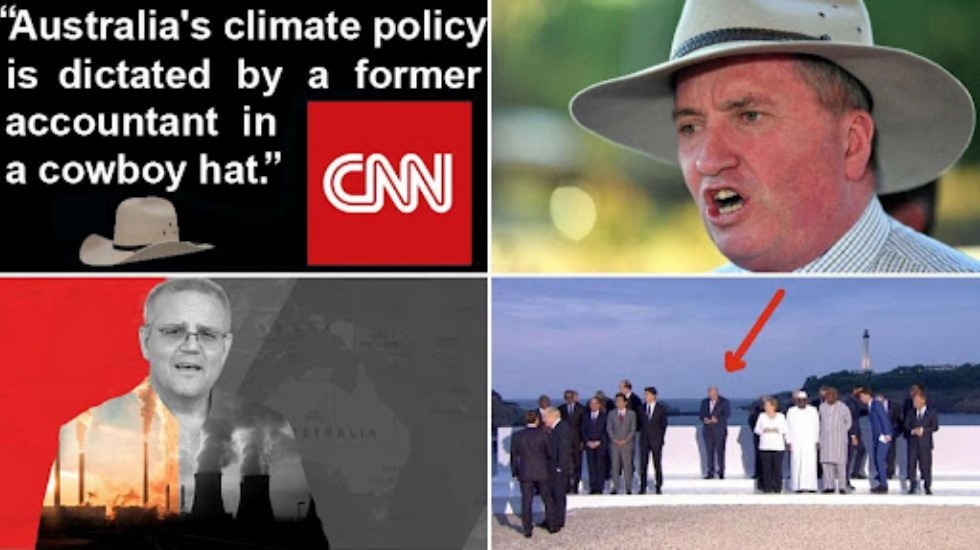

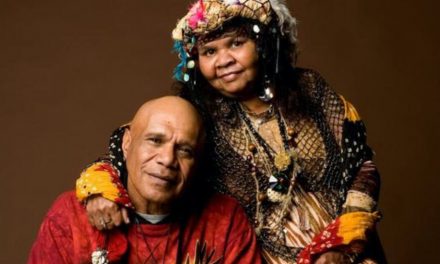

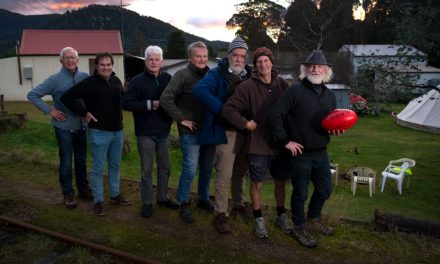






So pleased footyology is open to comment on issues beyond the boundary line. While Scomo lacks the charisma of Bontempelli he is playing (poorly), on a more significant field. Med sub required. Keep at it.